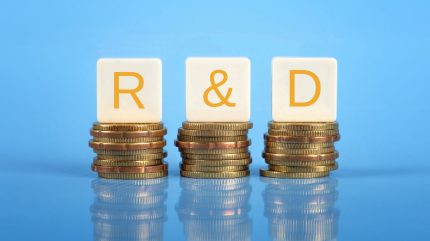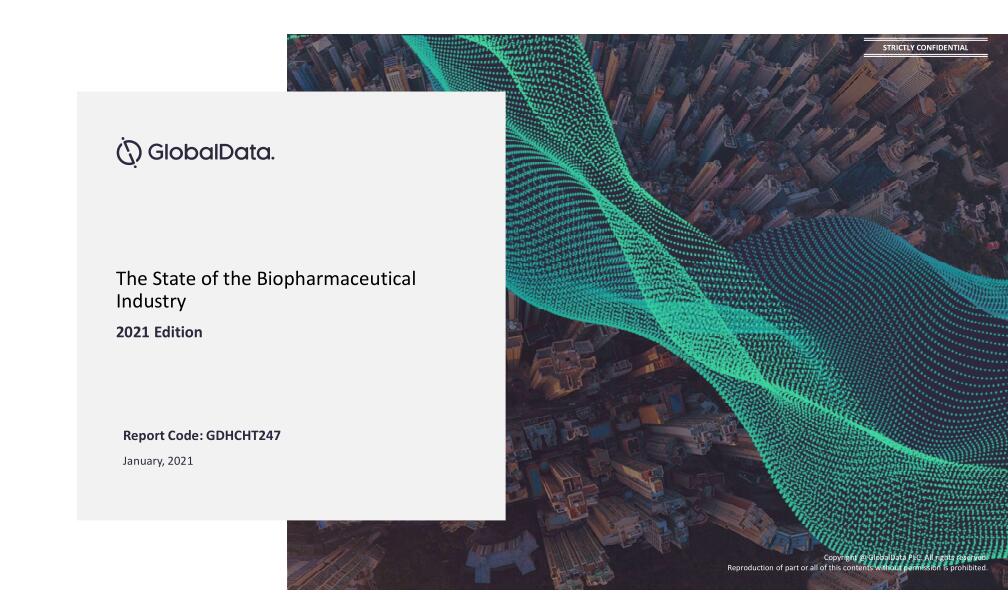
The year 2023 marked a significant change in the pharmaceutical industry’s landscape as investment in Covid-19 lost prominence in the aftermath of the pandemic and the research and development (R&D) focus shifted to other sectors in the drug development space such as the obesity and oncology.
Last year, major pharmaceutical companies heavily invested in R&D, with expenditure ranging from around 14% to 50% of their revenues. Some of the emerging R&D trends include a resurgence in investment and pipeline activity with a focus on radiopharmaceuticals and targeted therapies in oncology.
How well do you really know your competitors?
Access the most comprehensive Company Profiles on the market, powered by GlobalData. Save hours of research. Gain competitive edge.

Thank you!
Your download email will arrive shortly
Not ready to buy yet? Download a free sample
We are confident about the unique quality of our Company Profiles. However, we want you to make the most beneficial decision for your business, so we offer a free sample that you can download by submitting the below form
By GlobalDataIn this feature, we analyse publicly available data on how much leading pharma companies have spent on R&D expenditure in 2023. This analysed R&D investments were in the form of strategic acquisitions to expand a company’s prowess in a particular area or by in-licensing drug candidates to beef up their pipelines.
- Merck & Co- $30.5bn
- Roche- $15.56bn (CHF 14.20bn)
- Johnson & Johnson– $15.09bn
- Novartis– $ 11.37bn
- AstraZeneca– $10.94bn
- Pfizer– $10.58bn
- Eli Lilly- $9.31bn
- Bristol Myers Squibb– $9.21bn
- AbbVie– $7.68bn
- Sanofi– $7.18bn (EUR 6.73bn)
1. Merck & Co- $30.5bn
Merck & Co’s revenues reached $60.1bn in FY 2023, with R&D investments peaking at $30.5bn. Displaying a staggering 126% growth over the course of one year, the company’s R&D investments now represents 50.8% of its total revenue for 2023.
Notably over half of its R&D funds were dedicated to partnerships and acquisitions. Some of these collaborations include the strategic partnership with Caris Discovery for the detection of new cancer targets and the development of antibody drug conjugates (ADCs) for cancer. The company also announced another strategic partnership with Daiichi Sankyo to develop ADCs.
However, Merck & Co’s biggest deal of last year was the $10.8bn Prometheus Biosciences acquisition, to expand its immunology pipeline with leading assets in ulcerative colitis and Crohn’s disease.
The company’s R&D investment strategy focuses on the area of immuno-oncology and particularly the expansion of its portfolio after the success of its blockbuster cancer drug, Keytruda (pembrolizumab).
2. Roche- $15.56bn (CHF 14.20bn)
The previously long-standing top R&D spender, Roche, was in second place in 2023, spending approximately CHF 14.2bn ($15.56 bn) in R&D efforts. In this case, R&D expenditure slightly dropped by 6.7% from $15.22bn in 2022.
At the end of last year, the company joined the trending obesity market by spending $2.7bn to add an injectable dual GLP-1/GIP receptor agonist and an oral GLP-1 drug to its pipeline, through the acquisition of Carmot Therapeutics. Additionally, towards the end of last year, Roche also bought Roivant’s ulcerative colitis drug, RG-6631 (RVT-3101), for the high price tag of $7.1bn.
Roche aimed to optimise the impact of its R&D investments, with the sentiment of implementing stricter criteria for its Phase III pipeline to prevent a recurrence of the high-profile late-stage failures experienced in 2022, as seen with the Phase III Alzheimer’s asset, RG-1450 (gantenerumab).
3. Johnson & Johnson – $15.09bn
In 2023 Johnson & Johnson (J&J) displayed strong financial growth and was the leading pharmaceutical company in terms of revenues. The pharma giant ranked third in terms of R&D expenditure, investing approximately $15.1bn—a record-breaking figure for the company.
However, the company underwent a major R&D reorganisation last year by dropping assets in infectious diseases and vaccine areas.
J&J’s strategy has narrowed down its development pipeline by scrapping several clinical programmes such as the adult RSV vaccine, the Covid-19 and HIV programmes, as well as work on Hepatitis B and D. Continuing with its restructuring efforts, J&J recently announced that it is closing down a 200,000-square-foot research facility in the Bay Area, which only opened about 18 months ago.
Nonetheless, J&J has “jumped” on the ADC train by signing a $1.7bn licensing deal for the development and commercialisation of LCB84, with South Korean LegoChem Biosciences.
4. Novartis- $11.37bn
In 2023, Novartis’s R&D spend increased by 23.9% to $11.37bn. Part of the Swiss pharma giant’s strategy last year involved narrowing down its pipeline to focus investments in cardiovascular diseases, hematology, solid tumors, immunology, and neuroscience.
At the same time, Novartis expanded its investments in the radiopharmaceutical space by signing a deal with Bicycle Therapeutics for the use of its unique peptide technology for the development of radio-conjugates. Novartis also finalised a $3.2bn deal to acquire Chinook Therapeutics in August 2023, to boost its kidney disease pipeline. Through this deal, Novartis obtained two Phase III assets, BION-1301 (zigakibart) and ABT-627 (atrasentan hydrochloride), for which Novartis will seek accelerated approval this year.
5. AstraZeneca- $10.94bn
In 2023, AstraZeneca allocated resources towards platforms, new technologies, and capabilities to improve its efficiency in R&D through strategic partnerships. The company’s R&D budget reached $10.94bn in 2023, making up almost 24% of its 2023 revenue.
The company signalled an interest in expanding its cardiovascular and renal disease portfolio with a $1.8bn acquisition of CinCor. At the same time, the company maintained a strong interest in cell and gene therapies and partnered with Quell Therapeutics on the development, manufacturing and commercialisation of T- regulator (Treg) cell therapies.
Additionally, AstraZeneca was yet another pharma giant that focused on the R&D of ADCs in 2023, through research collaborations, such as with Daiichi Sankyo. These collaborations are already yielding promising results with the recent US Food and Drug Administration’s (FDA) acceptance of a review date for ADC therapy, TropP2-directed therapy, for non-small cell lung cancer (NSCLC) later this year. More regulatory milestones have already occurred in 2024 with the FDA’s approval of Daiichi Sankyo and AstraZeneca’s ADC, Enhertu (trastuzumab deruxtecan) for human epidermal growth factor receptor 2 (HER2)-positive solid tumours.
6. Pfizer- $10.58 bn
In the midst of the waning demand for Pfizer’s Covid-19 vaccine and antiviral Paxlovid (nirmatrelvir + ritonavir), the company’s R&D spending dropped by 6.6% to almost $10.6bn for 2023. Pfizer adopted cost-cutting initiatives including workforce reductions and terminations of pipeline programmmes in the areas of oncology, immunology and rare diseases. More specifically, the company terminated early-stage oncology assets as well as Phase II candidates in psoriasis and eczema.
While Pfizer scrapped some of its assets at the beginning of 2023, Pfizer expanded its ADC portfolio by completing the acquisition of Seagen for $43bn at the end of the year. This will allow the company to enhance its next-generation drug discovery capabilities in oncology and more specifically solid tumours. Additionally, the company maintains a strong focus on metabolic disorders and the development of vaccines.
7. Eli Lilly – $9.31bn
Eli Lilly, currently a market leader in obesity drugs along with Novo Nordisk, increased its R&D budget by 29% in 2023 compared to the previous year. The company’s R&D funds reached $9.31bn with plans to further accelerate the development of drugs for metabolic diseases. Lilly’s focus on R&D is further backed up by a high R&D budget to revenue ratio, which stands at 27% for 2023.
Moving forward, Eli Lilly’s R&D efforts are focused on building a pipeline of assets that can reduce muscle loss associated with incretin medications such as Zepbound and Novo’s Wegovy (semaglutide), and next generation obesity drugs like LY-3305677 (mazdutide), and be administered orally.
Apart from the obesity market, Eli Lilly is also invested in radiopharmaceuticals by acquiring POINT Biopharma for $1.4 bn late last year.
8. Bristol Myers Squibb- $9.21bn
Bristol Myers Squibb’s (BMS) R&D budget reached almost $10bn last year. BMS strengthened its neuroscience portfolio with the acquisition of Karuna Therapeutics, and its lead asset, KarXT (trospium chloride + xanomeline), a potential novel treatment for schizophrenia pending FDA approval. BMS also snagged RayzeBio’s key Phase III asset, RYZ101, as part of its $4.1bn acquisition of RayzeBio aimed at bolstering BMS’ radiopharmaceutical pipeline.
Apart from strategic acquisitions, BMS advanced the clinical development of a number of its own pipeline drugs, such as the potential first-in-class lysophosphatidic acid receptor 1 (LPA1) antagonist, BMS-986278 (admilparant), which will be studied in a Phase III programme in progressive pulmonary fibrosis (PPF).
At the close of 2023, BMS also joined other pharma giants investing in ADCs investments, by signing a $8.4bn ADC development deal with SystImmune.
9. AbbVie- $7.68 bn
Facing the patent expiration of Humira (adalimumab), AbbVie has been proactively strategising for this transition and increased its R&D budget to almost $7.7 bn in 2023. In line with numerous ADC-related investments last year, AbbVie acquired ImmunoGen for $10.1 bn to diversify its ADC programmes. Another significant investment announcement came at the end of the year, with the acquisition of Cerevel Therapeutics for $8.7bn, to strengthen its neuroscience pipeline. AbbVie also gained access to clinical-stage and preclinical candidates for conditions such as Parkinson’s disease and mood disorders, through its acquisition of Cerevel Therapeutics.
At the same time, AbbVie is also investing in the areas of immunology and oncology through the progression of its internal pipeline. Last year, the company initiated a Phase III trial of marketed immunology drug Rinvoq (upadacitinib) in hidradenitis suppurativa. AbbVie is also advancing its monoclonal antibody, ABT 981 (lutikizumab) in several indications like Crohn’s disease, inflammatory bowel disease, ulcerative colitis and more.
10. Sanofi- $7.18 bn (EUR 6.73 bn)
French pharma company, Sanofi, increased its R&D budget to EUR 6.73bn ($7.18bn), making its R&D budget 15.6% of its revenue. However, the company experienced some setbacks in the ADC space, with IBI-126’s (tusamitamab ravtansine)— the company’s sole clinical-stage ADC—failure to outperform chemotherapy in a Phase III trial for lung cancer patients. This led to the asset’s discontinuation along with another oncology candidate, SAR-441000 (BNT131).
Still, Sanofi managed to ink some significant deals and partnerships such as the one with Synthekine for the development of IL-10 therapeutics. The company also added promising assets such as a late-phase E.coli vaccine from Janssen and an inflammatory bowel disease asset from Teva to its pipeline.
Currency conversions were calculated based on the exchange rates on 18 April 2024. 1SFr = $1.10, €1 = $1.07




